Silverline 477936 Handleiding
Silverline
Detector
477936
Bekijk gratis de handleiding van Silverline 477936 (2 pagina’s), behorend tot de categorie Detector. Deze gids werd als nuttig beoordeeld door 50 mensen en kreeg gemiddeld 4.7 sterren uit 25.5 reviews. Heb je een vraag over Silverline 477936 of wil je andere gebruikers van dit product iets vragen? Stel een vraag
Pagina 1/2

477936
3-in-1 Detector
Do not dispose of waste electrical and electronic equipment as unsorted waste.
Carefully read and understand these instructions and any label attached to the tool before use. Keep
these instructions with the product for future reference. Ensure all persons who use this product are fully
acquainted with these instructions.
Familiarisation
1. Test Button
2. Speaker
3. Marking Groove
4. Spotlight LED
5. Signal LEDs
6. Power LED
7. 3-Way Selector Switch
8. Battery Compartment (on rear of device)
Unpacking Your Tool
• Carefully unpack and inspect your product. Fully familiarise yourself with all features of the tool. If
any parts are damaged or missing, return to your retailer and have them replaced
Installing the Battery
• Open Battery Compartment (8) located at the back of the unit. Connect a 9V battery (not included)
to the correct terminals and replace cover
Introduction
This unit is an advanced detector. It can be used to detect and locate live AC voltage, metal and studs.
Note: The sensitivity figures given in the specification are a general indication only and will vary. Do not
exclusively rely on this tool, especially in conditions that may not be typical of normal use.
Features
• AC scanning traces live wires
• Metal detection finds nails, pipes and other concealed metallic objects
• Detects wood and metal studs
Instructions
NOTES:
• Static electricity can give false readings. Earth yourself by placing your hands onto an earthed
surface before use, for example the case of an earthed appliance that is plugged into a wall
socket, or taps in a bathroom or kitchen. If you rub the detector along the wall it is possible to
generate static electricity and some walls may already hold a static charge. If the detector
appears to be giving false readings, remove the static charge on yourself, the tool and the surface
you are working on
• Some walls may have damp proofing, concealed metal mesh for plaster, or foil backed or metallic
wallpaper, which will prevent this tool from functioning correctly in one or more of the modes
• Some rechargeable batteries do not output 9V but instead 7.2V, and may not be suitable for this
tool
• Wall surfaces should be flat and dry before detecting commences
Operating Instructions
1. Set the 3-Way Selector Switch (7) to the appropriate setting AC WIRE, METAL or STUD
2. Hold the unit away from any AC sources/metal or for stud mode place the unit against the wall
and press and hold the Test Button (1)
3. The Power LED (6) will illuminate and the unit will self-calibrate (after 2 beeps the unit is
calibrated)
NOTES:
• Never release the test button during use (between calibration and actual use)
• For stud mode it is important to calibrate away from an area which may contain wall studs.
By lightly tapping the wall, a hollow sound may indicate an area free from studs
3-in-1 Detector
Détecteur 3 en 1
3-in-1-Ortungsgerät
Multidetector 3 en 1
Rivelatore 3 in 1
3-in-1 detector
• Carry out an AC live wire and metal scan before checking for studs, in case there are live wires or
metal present as these may be detected as studs
• Studs are usually around 38mm in width, and are spaced at approximately 400mm to 600mm
• It is possible the existence of concealed screws or nails may give a false reading when detecting
studs
NOTE: Midpoint between the two marks is the centre point of the live wire
4. Slowly move the detector sideways across the wall. When the unit moves closer to a live wire,
metal or stud, the signal LEDs will light sequentially from bottom to top. A weak detection signal
will be indicated on the lowest LED of the Signal LEDs (5). The strongest detection signal will
illuminate the top LED , Spotlight LED (4) and also be an audible indication from the Speaker (2)
5. The first indication of a strong detection signal will be at the edge of a live wire, metal part or
stud. Mark this with a pencil using the Marking Groove (3)
6. Now approach the area where there was a strong detection signal from the opposite side. The
first indication of strongest detection again should be marked with a pencil using the marking
groove
7. Midpoint between the two marks is the centre point of the live wire, metal or stud
8. Spend additional time detecting and marking out the direction of the cable, outline of metal
object or studs so that the full route or area is marked on the area of wall on which you are
working. This will enable you to know where to avoid or in the case of studs where to use
NOTE: When you have detected a live wire, remember to switch off the circuit breaker responsible for
powering the concealed cable before you start working on the wall. Check by detecting on the marked
area, to ensure the cable is no longer powered
WARNING: If a live wire is not detected in an area where expected, proceed with caution. It is possible
the live wire is too deep or it is shielded preventing detection
WARNING: If a live wire is detected over a wide area it is possible there is damage to the insulation of
the cable, and the wall is damp, creating a dangerous situation where an area of the wall is live. Consult
a qualified electrician immediately
Caractéristiques techniques
Profondeur de détection
1. Mode montant en bois: Montant en bois de 30 x 30mm: ≤ 18mm
2. Mode métal: Tuyau en acier de 25mm dia: ≤ 30mm
3. Mode câble sous tension: Profondeur usuelle de 50mm : de
90~250V à 50~60Hz
Température de fonctionnement: -7 ~ 40°C sous 75% HR fournie)
Température de stockage: -20~50°C sous 85% HR
Pile: 9V, PP3 ou similaire (non incluse)
Dimensions: 151 x 66 x 31m
Ne jetez pas les déchets d’équipements électriques et électroniques avec les ordures ménagères
générales.
Lire attentivement et comprendre les instructions et consignes de cet appareil. Gardez ces instruc-
tions avec le produit pour référence ultérieure. Assurez-vous que toutes personnes utilisant ce produit
aient pris entièrement connaissance de ces instructions.
Se familiariser avec le produit
1. Bouton testeur
2. Haut-parleur
3. Rainure d’indication
4. Lumière LED
5. Témoins lumineux de détections
6. Témoins lumineux de fonctionnement
7. Commutateur de mode
8. Compartiment de pile (à l’arrière de l’appareil)
Déballage
• Déballez le produit avec soin. familiarisez-vous avec toutes les caractéristiques du
produit. Vérifiez que tous les pièces sont présentes. Si des pièces sont endommagées ou
manquantes, remplacer-les avant d’utiliser l’appareil.
Installer la pile
• Faites glisser le couvercle du compartiment situé au dos de l’appareil. Branchez une pile
9 V correctement les connecteurs puis insérez la pile. Refermer le couvercle.
Introduction
Cet appareil est un détecteur avancé. Il peut être utilisé pour repérer des câbles sous tension, du
métal et des montants en bois.
REMARQUE : Les données des caractéristiques techniques sont seulement des indications générales
et peuvent variées. Ne vous fiez pas uniquement qu’à cet appareil, surtout lors d’une utilisation dans
des conditions inhabituelles.
REMARQUE :
• L’électricité statique peut modifier la lecture de l’appareil. Supprimez votre électricité
statique en posant votre main sur une surface connectée à la terre, comme par exemple
un appareil branché sur une prise murale, un robinet de la salle de bains ou de la
cuisine. Si vous frottez le détecteur le long d’un mur, il est possible de créer de
l’électricité statique, ou il se peut qu’un mur en soit déjà chargé. S’il apparait que le d
tecteur fournisse des lectures erronées, enlevez votre électricité statique, celle de
l’appareil et celle de la surface sur laquelle vous travaillez.
• Certains murs peuvent être protégés contre l’humidité, cacher des treillis métalliques
pour le plâtre ou présenter une couche en aluminium ou métallique sur la tapisserie ou
l’isolant, ce qui peut fausser la lecture du détecteur, et ce, dans un ou plusieurs modes.
• Certaines piles rechargeables ne fournissent que du 7,2 V au lieu du 9 V, et peuvent par
conséquent être inappropriées pour cet appareil.
• Avant d’effectuer toute détection, la surface des murs doit être plate et sèche.
Instructions d’utilisation
1. Sélectionnez le commutateur de mode (7) sur le mode requis : Câble sous tension, métal
ou montant de bois.
2. Eloignez l’appareil de tous câbles sous tension, pièces métalliques et bois, et placez le
détecteur contre le mur. Appuyez et maintenez le bouton testeur (1).
3. Le témoin lumineux de fonctionnement va s’allumer et l’appareil va s’auto-calibrer (2 sonner-
ies vous indiqueront que la calibration a été effectuée)
Remarque :
• Ne jamais relâcher le bouton testeur pendant l’utilisation (entre la calibration et
l’utilisation actuelle).
• En mode ‘bois’, il est important d’effectuer la calibration sur une surface qui
présente des montants bois. Pour trouver cette surface, tapez légèrement sur
le mur et fiez-vous au son émis. Un son sourd peut donc révéler la présence d’un
montant.
• Effectuer également une recherche de présence de câbles sous tension et de
métal, car ils pourraient être reconnus comme montants de bois.
• Les montants de bois sont en général d’une largeur de 38 mm, et sont espacés
approximativement de 400 à 600 mm.
• Il est possible que la présence de clous ou vis dans les montants faussent la
lecture du détecteur.
4. Déplacez lentement et latéralement le détecteur le long du mur. Lorsque l’appareil
s’approche d’un câble sous tension, d’un métal ou du bois, les témoins lumineux
s’allument consécutivement du bas vers le haut. Une détection faible sera
indiquée par le témoin lumineux de détections le plus bas (5). Une forte détection
sera indiquée par la LED se trouvant sur la partie la plus haute (4), ainsi que par
un signal sonore (2).
5. L’indication d’une forte détection sera située au bord d’un câble, d’un métal
ou d’un montant de bois. Marquez-la au crayon à papier en utilisant la rainure
d’indication (3).
6. Maintenant rapprochez-vous de l’endroit de la forte détection, mais par le côté
opposé. De même, marquez au crayon l’endroit où l’indication de détection est la
plus forte.
7. Le milieu des deux marques est donc le centre d’un câble, d’une pièce métallique
ou d’un montant de bois.
8. N’hésitez pas d’effectuer cette opération plusieurs fois sur toute la surface pour
être sûr d’avoir repérer les emplacements et directions des câbles, pièces métal
liques et montants de bois.
NOTE : Si vous découvrez un câble sous tension, coupez le disjoncteur permettant l’alimentation de
ce câble avant de commencer tous travaux sur le mur. Vérifiez avec le détecteur s’il est toujours
sous tension ou non.
ATTENTION : Si un câble n’est pas détecté alors qu’il est supposé l’être, procédez avec prudence. Il
est possible que le câble sous tension soit assez profond dans le mur, ou qu’il soit blindé.
ATTENTION : Si un câble sous tension est détecté sur une large zone, il est possible que l’isolation du
câble soit endommagée et que le mur soit humide, ce qui représente une source de danger. Dans un
tel cas, contactez un électricien qualifié immédiatement.
1 x 9V (PP3)
Specification
Detection depth
1. Stud mode: Wood stud of 30 x 30mm: ≤ 18mm
2. Metal mode: Iron pipe 25mm dia: ≤ 30mm
3. AC mode: Typical depth of 50mm for 90~250V at 50~60Hz
Operation condition: -7 ~ 40°C below 75%RH
Storage condition: -20~50°C below 85%RH
Battery: 9V, PP3 or equivalent (not included)
Dimensions: 151 x 66 x 31mm
www.silverlinetools.com
1
2
3
4
5
6
7
8

Technische Daten
Ortungs-Tiefe
1. Balken-Modus: Balken von 30 x 30 mm: ≤ 18 mm
2. Metall-Modus: Eisenrohr 25-mm-Durchmesser: ≤ 30 mm
3. Wechselstrom-Modus: Typische Tiefe von 50 mm für 90 – ca. 250 V
bei 50 – ca. 60 Hz
Einsatzbedingungen: -7°C – ca. 40°C, unter 75% relative Luftfeuchte
Lagerbedingungen: -20°C – ca. 50°C, unter 85% relative Luftfeuchte
Batterie: 9 V, PP3 oder äquivalent (nicht im Lieferumfang enthalten)
Abmessungen: 151 x 66 x 31 mm
Einlegen der Batterie
• Schieben Sie den Deckel des Batteriefaches (8) auf. Setzen Sie eine 9-V-Batterie (nicht im
Lieferumfang enthalten) ein und achten Sie dabei auf die richtige Polung. Schließen Sie
den Batteriefachdeckel anschließend wieder.
Einführung
Bei diesem Gerät handelt es sich um einen leistungsstarken Detektor. Dieser kann benutzt werden um
stromführende Wechselstromleitungen, Metallobjekte und Balken aufzuspüren.
HINWEIS: Die in den technischen Daten gemachten Angaben zur Ortungstiefe sind Durchschnittswerte
und können abweichen. Verlassen Sie sich besonders beim Vorhandensein nicht-idealer Bedingungen
nicht ausschließlich auf die Angaben dieses Werkzeuges.
Funktionen
• Aufspüren von spannungsführenden Wechselstromleitungen
• Aufspüren von Nägeln, Rohrleitungen und anderen verborgenen metallischen Objekten.
• Findet Holzbalken und Metallstreben
Bedienung
HINWEISE:
• Das Vorhandensein statischer Elektrizität kann zu Abweichungen und Fehlanzeigen führen.
Erden Sie sich daher vor der Benutzung durch Anfassen einer geerdeten Oberfläche
wie z.B. das Metallgehäuse eines geerdeten und ans Stromnetz angeschlossenen Gerätes,
oder eines Metallwasserhahnes im Bad oder in der Küche. Wenn Sie den Detektor über
die Wand führen kann es auch dort zu statischer Aufladung kommen, bzw. Wände können
bereits statisch aufgeladen sein. Erden Sie sich und das Werkzeug erneut, falls der Detek
tor fragwürdige Ergebnisse liefert.
• In manchen Wänden können Feuchtigkeitssperren, Metallgewebe für Putz oder Fliesen,
Tapeten mit metallischer Rückwand o.ä. verborgen sein. All diese können dazu führen,
dass das Gerät in einer oder mehreren Betriebsarten nicht korrekt funktioniert.
• Manche 9-V-Akkus liefern lediglich eine Spannung von 7,2 V. Dies kann evtl. nicht für den
korrekten Betrieb des Gerätes ausreichen.
• Wandoberflächen müssen vor Beginn der Arbeit eben und trocken sein.
Bedienungsanleitung
1. Schieben Sie den 3-Weg-Betriebsart-Wahlschalter (7) in die gewünschte Stellung für Wechsel
stromleitungen („AC WIRE“), Metall („METAL“) oder Balken („STUD“).
2. Halten Sie das Gerät von etwaigen Stromquellen und Metall weg, bzw. halten Sie es gegen eine
Wand, falls Sie im Balken-Modus arbeiten möchten. Drücken Sie dann den Test-Schalter (1) und
halte Sie diesen gedrückt.
3. Die LED-Betriebsanzeige (6) wird aufleuchten und das Gerät kalibriert sich. Wenn Sie zwei Pieptöne
hören ist das Gerät kalibriert und betriebsbereit. Lassen sie nun den Schalter wieder los.
HINWEISE:
• Halten Sie den Test-Schalter gedrückt und lassen Sie ihn nicht los bis die Kalibrierung erfolgt ist.
• Im Balken-Modus ist es wichtig an einer Wandstelle zu kalibrieren, an der sich keine verborgenen
Balken oder Streben befinden. Eine solche Stelle kann evtl. durch Klopfen gefunden werden, wenn
man eine Stelle findet, an der sich die Wand hohl anhört.
• Suchen Sie vor der Balkensuche nach Wechselstromleitungen und Metallteilen, da diese sonst evtl.
im Balkenmodus fälschlich als Balken identifiziert werden.
• Balken sind normalerweise circa 38 mm breit und in Abständen von 400 bis 600 mm angeordnet.
• Verborgene Schrauben und Nägel können evtl. fälschlicherweise als Balken identifiziert werden.
4. Bewegen Sie den Detektor langsam seitlich über die zu untersuchende Wand. Sobald das Gerät
sich einer stromführenden Wechselstromleitung, bzw. einem Metallobjekt oder Balken annähert,
leuchten die Signal-LEDs (5) sequenziell von unten nach oben auf: Ein schwaches Signal lässt
die untere Signal-LED aufleuchten, ein starkes die obere und die Spotlight-LED. Außerdem wird
bei starkem Ausschlag ein akustisches Signal über den Lautsprecher (2) ausgegeben.
5. Ein starkes Signal wird vom Rand einer Wechselstromleitung, eines Metallobjektes oder Balkens aus
abgegeben. Markieren Sie dort den Bereich mit einem Bleistift von der Markierungskerbe (3) aus.
6. Nähern Sie sich der soeben markierten Stelle nun von der anderen Seite aus an, bis sie auch
dort ein starkes Signal erhalten. Markieren Sie dort ebenfalls den Bereich mit dem Bleistift an
der Markierungskerbe.
7. Der Mittelpunkt zwischen den beiden gezeichneten Markierungen ist das Zentrum der Wechsel
stromleitung, des Metallobjektes bzw. Balkens.
8. Nehmen Sie sich nun etwas Zeit um das unmittelbare Umfeld des gefundenen Objektes zu
untersuchen, und den Verlauf der Wechselstromleitung, des Metallobjektes oder Balkens zu
bestimmen und auf der Wand zu kennzeichnen. Dadurch wird klar, welchen Bereich Sie bei
Arbeit an der betreffenden Wand meiden müssen, bzw. im Falle der Bestimmung von Balken/
Streben wo befestigt werden kann.
HINWEIS: Denken Sie daran den Sicherungsautomaten für die jeweilige erkannte Leitung auszus-
chalten bevor Sie mit Arbeiten an der entsprechenden Wand beginnen. Überprüfen Sie die Stelle nach
dem Abschalten erneut mit dem Detektor. Die Leitung sollte sich nicht finden lassen wenn sie nicht
mehr stromführend ist.
WARNUNG: Falls das Gerät an einer Stelle, wo Sie eine Wechselstromleitung vermuten, keine solche
anzeigt, gehen Sie mit Vorsicht vor! Evtl. liegt die Leitung zu tief in der Wand oder sie ist auf irgendeine
Art und Weise abgeschirmt.
WARNUNG: Falls der Detektor eine Wechselstromleitung über einen größeren Wandbereich hinweg an-
zeigt, kann es möglich sein, dass die Isolierung einer Leitung beschädigt ist, und dadurch ein feuchter
Wandbereich stromführend wird. Dies ist eine gefährliche Situation, und Sie sollten unmittelbar einen
qualifizierten Elektriker konsultieren.
Características Técnicas
Profundidad de detecci
1. Modo vigueta: Vigueta/listón de madera 30 x 30 mm: ≤ 18 mm
2. Modo metal: Tuberías metálicas 25 mm diá: ≤ 30 mm
3. Modo CA: Profundidad máxima de 50 mm para 90 ~ 250 V a 50 ~ 60 Hz
Temperatura de funcionamiento: -7 ~ 40 °C bajo 75% de humedad
Temperatura de almacenaje: -20 ~ 50 °C bajo 85% de humedad
Pila: 9 V, PP3 o equivalente (no incluida)
Tamaño: 151 x 66 x 31 mm
Los aparatos y residuos eléctricos usados no se deben mezclar con la basura convencional.
Lea este manual atentamente para asegurarse de obtener todas las ventajas que le ofrece su nueva
herramienta. Conserve este manual a mano y asegúrese de que todos los usuarios de la herramienta
lo hayan leído y entendido.
Características del producto
1. Botón de encendido
2. Altavoz
3. Centro del detector
4. Luz indicadora de centrado
5. Luces indicadoras
6. Luz de encendido
7. Selector de 3 modos
8. Compartimento de la batería (parte posterior)
Desembalaje
• Desembale e inspeccione la herramienta con cuidado. Familiarícese con todas sus características
y funciones. Si faltan piezas o están dañadas, solicite su sustitución antes de utilizar esta
herramienta.
Montaje de la pila
• Para acceder al compartimiento de la pila (8), deslice hacia afuera la tapa en la parte posterior
de la herramienta. Ahora puede poner la pila PP3 de 9 V (no incluida). Vuelva a poner la tapa.
Introducción
Este detector avanzado puede detectar listones de madera y viguetas de techo, cables con tensión
y objetos metálicos.
Nota: Los datos especificados en las características técnicas de este producto son únicamente
orientativos y pueden variar.
Funciones
• Detección de cables eléctricos bajo tensión.
• Detección de metales tales como clavos, tuberías y otros objetos metálicos.
• Detección de listones y viguetas de madera y metal.
INSTRUCCIONES
NOTAS:
• La electricidad estática puede provocar resultados erróneos. Asegúrese de descargar
toda la electricidad estática acumulada en su cuerpo, para ello deberá colocar sus
manos en una superficie con toma de tierra antes de utilizar la herramienta.
• Algunas paredes están construidas con materiales antihumedad, mallas metálicas
ocultas o papel metálico. Estos materiales pueden afectar el funcionamiento de esta
herramienta.
• Normalmente las pilas recargables de 9 V sólo proporcionan 7,2 V, siendo no reco
mendables para utilizar con esta herramienta.
• Antes de utilizar el detector, asegúrese de que las paredes estén totalmente secas y
sean planas.
Instrucciones de funcionamiento
1. Ajuste el conmutador de 3 modos (7) en el modo de detección apropiado.
2. Coloque el detector contra la pared y pulse el botón de encendido (1).
3. La luz de encendido (6) se iluminará y comenzará a auto calibrarse (estará completa
mente calibrado después de emitir 2 señales audibles).
NOTAS:
• Nunca suelte el botón de encendido mientras mueve la herramienta, el detector
indicará lecturas erróneas.
• Cuando use el detector en modo listones o viguetas (Stud), se recomienda realizar el
calibrado previamente en paredes donde no contengan listones o viguetas.
• Se recomienda siempre utilizar el detector en modo metal y cable con tensión antes de
utilizar el modo listones o viguetas (Stud).
• Los objetos metálicos ocultos tales como clavos o tornillos pueden dar como resultado
mediciones erróneas.
4. Mueva el detector lentamente a través de la pared horizontalmente. Las luces indicadoras
se iluminarán automáticamente cuando el detector se acerque a un cable con tensión,
listón de madera u objeto metálico. La luz indicadora (5) más baja determinará una detección débil, la luz indicadora más alta determinará una buena detección. La luz
indicadora de centrado (4) también se iluminará y el altavoz (2) del detector emitirá
señales audibles.
5. Una vez haya detectado el objeto satisfactoriamente, utilice un lápiz y el centro del detector
(3) para marcar el borde del objeto detectado en la superficie de la pared.
6. Repita el paso anterior pero en sentido opuesto para localizar el otro borde del objeto.
Marque el borde opuesto del objeto detectado en la superficie de la pared.
7. Coloque el detector en la posición central entre ambos bordes del cable de tensión, listón u
objeto metálico detectado.
8. Se recomienda utilizar el tiempo necesario para detectar y marcar correctamente la
trayectoria del objeto detectado. Esto le permitirá saber la posición exacta del objeto y le ayudará
a analizar con mayor precisión la superficie de trabajo.
NOTA: Siempre que detecte cables bajo tensión deberá acordarse de desconectar el suministro
eléctrico antes de proceder a realizar cualquier tipo de tarea. Siga la trayectoria del cable y asegúrese
de que este no tenga tensión.
ADVERTENCIA: Tenga precaución, en algunas ocasiones puede que los cables de tensión estén
enmascarados o colocados a demasiada profundidad.
ADVERTENCIA: Tenga precaución, en algunas ocasiones el recubrimiento aislante de los cables bajo
tensión puede estar dañado, si este entra en contacto con la humedad acumulada en la pared el
detector detectará una lectura errónea de gran longitud. Consulte inmediatamente con un profesional
cualificado.
Specifiche
Profondità di rilevamento
1. Modalità vite: Perno in legno di 30 x 30 mm: ≤ 18 mm
2. Modalità metallo: Tubo in ferro 25 mm diametro: ≤ 30 mm
3. Modalità AC: Profondità tipica di 50 mm per 90 ~ 250V a 50 ~ 60Hz
Condizione di funzionamento: 7 ~ 40 ° C inferiore al 75% di umidità relativa
Condizioni di deposito: -20 ~ 50 ° C al di sotto 85% di umidità relativa
Batteria: 9V, PP3 o equivalente (non incluso)
Dimensioni: 151 x 66 x 31mm
Leggere attentamente e comprendere appieno queste istruzioni e ogni etichetta attaccata allo
strumento prima dell’uso. Conservare queste istruzioni con il prodotto per riferimento futuro.
Assicurarsi che tutte le persone che utilizzano questo prodotto sono a perfetta conoscenza delle
presenti istruzioni.
Familiarizzazione
1. Pulsante di prova
2. altoparlante
3. Marcatura scanalatura
4. faretto a LED
5. LED di segnalazione
6. LED di alimentazione
7. 3 vie Selettore
8. Vano batteria (sul retro del dispositivo)
Disimballaggio
• Con attenzione disimballare e controllare il vostro prodotto. Familiarizzarsi appieno con tutte le
caratteristiche di questo utensile. Nel caso di parti danneggiate o mancanti, rivolgetevi al vostro
rivenditore per la sostituzione.
Installazione della batteria
• Aprire il vano della batteria (8) situato sul retro dell’unità. Collegare una batteria da 9V
(non in dotazione) ai terminali giusti. Inserire la batteria e riposizionare il coperchio.
Introduzione
Questa unità è un rilevatore avanzato. Esso può essere utilizzato per rilevare e localizzare live
tensione AC, metallo e viti.
NB: I dati riportati nella sensibilità specifica sono un’indicazione generale e possono variare. Non
affidarsi esclusivamente su questo strumento, specialmente in condizioni che non possono essere
tipici di uso normale.
Caratteristiche
• Scansione AC evidenzia fili sotto tensione.
• La rivelazione dei metalli trova chiodi, tubi e altri oggetti metallici nascosti.
• Rileva borchie in legno e metallo.
Istruzioni
NOTE:
• L’elettricità statica può dare false letture. Isolarsi mettendo le mani su una superficie messa a terra
prima dell’uso, per esempio il caso di un apparecchio collegato a terra che è collegato a una presa a
muro, o rubinetti in bagno o in cucina. Se si strofina il rilevatore lungo la parete è possibile generare
elettricità statica e alcune pareti già di una carica statica. Se il rilevatore sembra dare false letture,
rimuovere la carica statica su te stesso, dal lo strumento e dalla superficie si sta lavorando.
• Alcune pareti possono essere umide, possono contenere metallo nascosto per intonaci,
carta da parati rivestita con lamina metallica che impedirà questo strumento di funzion are
correttamente in uno o più dei modi.
• Alcune batterie ricaricabili non emettono 9V ma invece 7,2 V, e può non essere adatto per questo
strumento.
• Superfici murali devono essere piatte e asciutte prima che la rivelazione inizia.
Istruzioni per l’uso
1. Impostare l’interruttore selettore a 3 vie (7) all’impostazione dei FILI AC, METALLO o BORCHIE.
2. Tenere l’unità lontano da qualsiasi fonte di AC / metallo o modalità borchie posizionare l’unità
contro la parete e premere e tenere premuto il pulsante di prova (1).
3. Il LED di alimentazione (6) si accende e l’unità si auto-calibra (dopo 2 bip l’unità è calibrata).
Specificaties
Detectie diepte
1. Balk mode: Houten balken van 30 x 30 mm: ≤ 18 mm
2. Metaal mode: IJzeren leidingen 25 mm dia: ≤ 30 mm
3. AC mode: Typische diepte van 50 mm voor 90~250 V op 50~60 Hz
Gebruiksomstandigheden: -7 ~ 40°C onder 75% luchtvochtigheid
Opberg omstandigheden: -20~50°C onder 85% luchtvochtigheid
Batterij: 9 V, PP3 of equivalent (niet inbegrepen)
Afmetingen: 151 x 66 x 31 mm
Gooi uw AEEA (afgedankt elektrisch en elektronisch afval) niet met uw huishoudelijk afval weg
Lees alle inbegrepen instructies voor gebruik aandachtig door en houd deze bij de detector voor
toekomstig gebruik. Zorg ervoor dat alle gebruikers van de detector volledig met de instructies
bekent zijn.
Productbeschrijving
1. Test knop
2. Speaker
3. Markeergroef
4. Spotlight LED
5. Signaal LED’s
6. Stroom LED
7. 3-weg selectieschakelaar
8. Batterij compartiment (achterzijde van de eenheid)
Uw gereedschap uitpakken
• Pak uw gereedschap uit en inspecteer het grondig. Zorg dat u met alle kenmerken en ei
genschappen van het apparaat vertrouwd bent. Als er onderdelen ontbreken of beschad igd zijn,
zorg dan dat deze vervangen worden voor u dit gereedschap gebruikt.
Het installeren van de batterij
• Open het batterij compartiment (8) aan de achterzijde van de eenheid. Plaats een 9 V batterij (niet
inbegrepen) in het compartiment en schuif de kap terug om het compartiment te sluiten.
Introductie
De geavanceerde detector kan gebruikt worden voor het opsporen van stroomdraad, steunbalken
en metalen objecten.
LET OP: De gevoeligheidscijfers, gegeven in de specificaties, zijn een algemene richtlijn en zullen
variëren. Vertrouw niet enkel op de detector, vooral in omstandigheden niet ideaal voor het gebruik
van de detector.
Functies
• Het opsporen van stroomdraad.
• Het opsporen van spijkers, leidingen en andere verborgen metalen voorwerpen.
• Het opsporen van houten en metalen balken.
Instructies
Opmerkingen:
• Statische elektriciteit geeft mogelijk fouten lezingen. Aard uzelf door uw handen voor gebruik op
een geaard voorwerp te plaatsen, als de behuizing van een geaarde applicatie aangesloten is op
een stopcontact of kranen in de badkamer of keuken. Wanneer de detector over de muur gescho
ven wordt ontstaat er mogelijk statische elektriciteit en sommige muren bevatten mogelijk
statische elektriciteit. Wanneer de detector verkeerde lezingen blijkt te geven, verwijdert u de
statische lading van uzelf, de detector en het werkoppervlak.
• Sommige muren bevatten mogelijk vochtbestendige lagen, verborgen metaal maas voor stuka
doorswerk of behang met folie laag/metallisch behang waardoor de detector in meerdere modes
onjuist zal functioneren.
• Sommige oplaadbare batterijen geven een 7,2 V output in plaats van 9 V en zijn niet geschikt voor
gebruik in de detector.
• Muuroppervlakken horen vlak en droog te zijn voor het gebruik van de detector.
Gebruiksinstructies
1. Stel de 3-weg selectieschakelaar (7) op de benodigde stand.
2. Houd de eenheid uit de buurt van stroombronnen en metaal. In balk mode houdt u de eenheid
tegen de muur en houdt u de test knop (1) ingedrukt.
3. Het stroom LED (6) zal branden en de eenheid kalibreert zichzelf (na 2 piepjes is de kalibratie
voltooid).
OPMERKINGEN:
• Laat de test knop tijdens gebruik niet los.
• Voor balk mode is het belangrijk te kalibreren in een ruimte zonder balken. Door licht op een muur
te tikken duidt een hol geluid mogelijk op een balkvrije ruimte.
• Controleer een ruimte op stroomdraad en metaal voordat een balkdetectie wordt uitgevoerd.
Stroomdraad en metalen voorwerpen worden mogelijk in de balk mode gedetecteerd als balken.
• Balken hebben normaal gesproken een breedte van ongeveer 38 mm en hebben een tussenruimte
van 400 – 600 mm.
• Het is mogelijk dat schroeven en spijkers een onjuiste meting geven bij het opsporen van balken.
4. Schuif de detector langzaam zijwaarts over de muur. Wanneer de eenheid dichter bij een
stroomdraad, balk of metaal voorwerp komt, lichten de LED’s van onder naar boven op. Bij een
zwakke indicatie licht de onderste LED op. Bij een sterke indicatie lichten de bovenste LED en
het spotlight op en neemt u een hoorbare indicatie vanuit de speaker waar.
5. De eerste indicatie van een sterk signaal geeft de rand van een stroomdraad, balk of metaal
voorwerp weer. Markeer deze locatie met een potlood in de markeergroef (3).
6. Start nu vanuit de andere zijde en schuif de eenheid over de muur in de richting van de marker-
ing. Markeer ook nu de het sterkste indicatiepunt.
7. Het middelpunt tussen de twee markeringen indiceert het middelpunt van de stroomdraad, de
balk of het metalen voorwerp.
8. Detecteer en markeer nu de kabel richting of de outline van het metalen voorwerp of de balk
zodat het volledige gebied op de muur gemarkeerd is. Zo is het helder welke gebieden wel of
niet te gebruiken.
OPMERKING: Wanneer een stroomkabel gedetecteerd wordt, hoort de stroombreker uitgeschakeld te
worden voordat u start met het werk op de muur. Controleer het gemarkeerde gebiedt om er zeker van
te zijn dat de kabel niet meer voorzien wordt van stroom.
WAARSCHUWING: Wanneer stroomdraad niet gedetecteerd wordt in een gebiedt waar detectie wordt
verwacht, gaat u voorzichtig verder met het werk. Het is mogelijk dat het draad te diep in de muur zit
of afgeschermd wordt waardoor detectie voorkomen wordt.
WAARSCHUWING: Wanneer een stroomkabel over een breed oppervlak gedetecteerd wordt is het
mogelijk dat de isolatie van de kabel beschadigd is en de muur vochtig is, waardoor een deel van
de muur onder spanning staat. Neem in deze gevaarlijke situatie onmiddellijk contact op met een
gekwalificeerd elektricien.
Entsorgen Sie Elektrische und Elektronische Geräte nicht mit dem Hausmüll.
Betreiben Sie das Gerät erst, wenn Sie diese Bedienungsanleitung und alle am Gerät angebrachten
Etiketten sorgfältig gelesen und verstanden haben. Bewahren Sie alle Anleitungen mit dem Gerät für
spätere Nachschlagezwecke auf. Vergewissern Sie sich, dass alle Benutzer dieses Produkts diese
Bedienungsanleitung vollständig verstanden haben.
Produktübersicht
1. Test-Schalter
2. Lautsprecher
3. Markierungskerbe
4. Spotlight-LED
5. Signal-LEDs
6. LED-Betriebsanzeige
7. 3-Weg-Betriebsart-Wahlschalter
8. Batteriefach (auf der Geräterückseite)
Auspacken des Gerätes
• Packen Sie Ihr Werkzeug vorsichtig aus und überprüfen Sie es. Machen Sie sich
vollständig mit all seinen Eigenschaften und Funktionen vertraut. Vergewissern Sie
sich, dass sämtliche Teile des Werkzeugs vorhanden und in einwandfreiem Zustand sind.
Sollten Teile fehlen oder beschädigt sein, lassen Sie diese ersetzen, bevor Sie das
Werkzeug verwenden.
NOTE:
• Non rilasciare il pulsante di prova durante l’uso (tra calibrazione e l’uso effettivo).
• Per la modalità borchie è importante calibrare lontano da una zona che può contenere borchie nel
muro. Battendo leggermente il muro, un suono sordo può indicare una zona libera da borchie.
• Effettuare una scansione per filo di corrente AC e metallo prima di controllare per borchie, nel caso
ci siano fili scoperti o metallo presente in quanto questi possono essere rilevati come borchie.
• Le borchie sono di solito intorno a 38 mm di larghezza, e sono distanziati di circa 400 mm a 600mm.
• E ‘possibile che la presenza di viti o chiodi nascosti può dare una lettura falsa quando rilevate
borchie.
4. Spostare lentamente il sensore lateralmente attraverso la parete. Quando l’unità si avvicina ad un
filo sotto tensione, metallo o viti, i LED a segnale si accendono in sequenza dal basso verso l’alto.
Un debole segnale di rilevamento sarà indicato sul più basso LED del LED del segnale (5). Il
segnale più forte di rilevamento illumina la parte superiore del LED, il faro a LED (4) e ci sarà
anche un segnale acustico dalla cassa (2).
5. La prima indicazione di un forte segnale di rivelazione sarà a bordo di un filo sotto tensione, parte
metallica o viti. Segna questo con una matita con il marcatura scanalatura (3).
6. Ora avvicinarsi alla zona in cui ci era un forte segnale di rilevamento dal lato opposto. La prima
indicazione di rilevamento ancora più forte deve essere contrassegnato con una matita con la
marcatura di scanalatura .
7. Punto medio tra i due marchi è il punto centrale del filo sotto tensione, metallo o perno.
8. Trascorrere del tempo supplementare per la rilevazione e marcatura della direzione del contorno
del cavo, l’oggetto in metallo o borchie in modo che l’intera zona è indicata sulla superficie di
parete su cui si sta lavorando. Questo vi permetterà di sapere dove evitare o, nel caso di borchie
dove utilizzare.
NB: Quando avete trovato un filo sotto tensione, ricordarsi di spegnere l’interruttore responsabile per
l’alimentazione del cavo nascosto prima di iniziare a lavorare sul muro. Controllare facendo scorrere
il rilevatore sulla parte segnata, per assicurare che il cavo non è più alimentato ATTENZIONE: se un
filo non viene rilevato in una zona dove previsto, procedere con cautela. E ‘possibile che il cavo sotto
tensione è troppo profondo o è riparato impedendo il rilevamento.
AVVERTENZA: Se un filo viene rilevato su una vasta area è possibile che l’isolamento del cavo potrebbe
essere danneggiato, e la parete è umida, creando una situazione di pericolo in cui una superficie della
parete è sotto tensione. Consultare un elettricista qualificato immediatamente.
www.silverlinetools.com
Product specificaties
| Merk: | Silverline |
| Categorie: | Detector |
| Model: | 477936 |
Heb je hulp nodig?
Als je hulp nodig hebt met Silverline 477936 stel dan hieronder een vraag en andere gebruikers zullen je antwoorden
Handleiding Detector Silverline

14 Maart 2023

28 Februari 2023

18 Oktober 2022
Handleiding Detector
- Hikvision
- Cavius
- Axis
- Beha-Amprobe
- Smartwares
- Rocky Mountain
- AccuBANKER
- BRK
- Cobra
- Whistler
- Satel
- Joy-it
- Beltronics
- Winland
- Dometic
Nieuwste handleidingen voor Detector
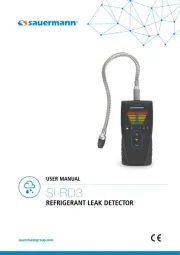
1 September 2025

20 Augustus 2025
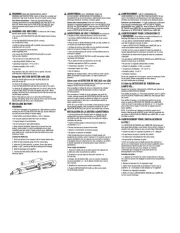
18 Augustus 2025

12 Augustus 2025
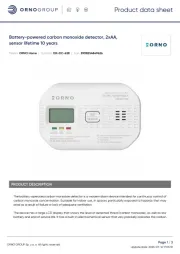
11 Augustus 2025
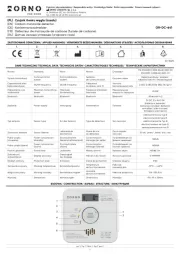
11 Augustus 2025
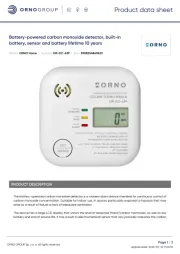
11 Augustus 2025
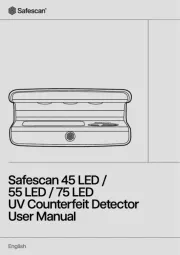
8 Augustus 2025

28 Juli 2025
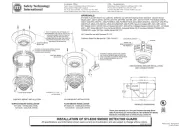
24 Juli 2025